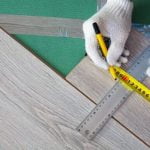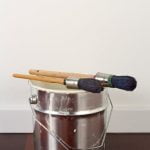In today’s connected world, having a strong phone signal at home is more important than ever. Whether you rely on your phone for work, staying in touch with loved ones, or simply browsing the internet, a weak signal can be frustrating and hinder your productivity.
However, improving your phone signal at home doesn’t have to be a complicated or expensive endeavor. By understanding the factors affecting your phone signal and implementing some simple strategies, you can significantly boost your signal strength and enjoy reliable connectivity.
One of the first steps in improving your phone signal is understanding the factors that can affect it. Factors such as distance from cell towers, obstructions like buildings or trees, and even interference from electronic devices can all contribute to a weakened signal. By identifying these factors, you can begin to address them one by one and improve your overall signal strength.
Assessing your current phone signal strength is another crucial step in enhancing connectivity at home. This can be done through apps or settings on your smartphone that provide information about signal strength and network quality. By knowing where you currently stand in terms of signal strength, you can track improvements as you implement different strategies to boost your reception.
By optimizing your home’s Wi-Fi network and positioning your router strategically, you can also enhance your phone’s connection. Additionally, clearing obstructions like walls or furniture that may be blocking the signal path will also help improve overall coverage. Investing in signal boosters or extenders designed specifically for enhancing cellular signals can also provide a significant improvement in coverage throughout your home.
Ultimately, with a few key adjustments and some investment in the right tools or services, enjoying a strong phone signal at home is within reach for everyone. In the upcoming sections of this article, we will delve deeper into understanding the factors affecting your phone signal as well as explore various strategies to boost connectivity and eliminate interference.
Understanding the Factors Affecting Your Phone Signal
When it comes to improving your phone signal at home, it is essential to understand the factors that can affect the strength of your signal. By understanding these factors, you can take appropriate measures to optimize your phone signal and enjoy better connectivity.
One of the primary factors that can impact your phone signal is the distance between your device and the cell tower. The farther away you are from a cell tower, the weaker your signal will be. Additionally, the materials used in the construction of your home can also play a role in weakening your phone signal. Materials such as concrete and metal can block or absorb radio waves, resulting in a weaker signal.
Another factor to consider is interference from other electronic devices. Devices such as cordless phones, baby monitors, and microwaves can produce electromagnetic waves that interfere with your phone’s reception. It is important to keep these devices away from your router or use Wi-Fi channels that are less prone to interference.
Lastly, environmental factors can also have an impact on your phone signal. Natural obstructions like trees or hills can weaken or block signals, especially if they are between your device and the cell tower. Weather conditions such as heavy rainfall or storms can also contribute to signal degradation.
By understanding these factors, you can make informed decisions about how to improve your phone signal at home. Whether it’s choosing the optimal location for your router or investing in devices like signal boosters or extenders, taking these factors into account will help you maximize your connectivity.
| Factors Affecting Phone Signal Strength | Impact on Signal |
|---|---|
| Distance from cell tower | The farther away from a cell tower, the weaker the signal. |
| Materials used in home construction | Materials like concrete and metal can block or absorb radio waves, resulting in a weaker signal. |
| Interference from electronic devices | Devices such as cordless phones, baby monitors, and microwaves can interfere with the phone’s reception. |
| Natural obstructions | Trees, hills, or other obstacles between the device and cell tower can weaken or block signals. |
| Weather conditions | Environmental factors like heavy rainfall or storms can contribute to signal degradation. |
Assessing Your Current Phone Signal Strength
Before you can begin improving your phone signal at home, it’s important to assess the current strength of your signal. By understanding how strong or weak your signal is, you can then determine which steps will be most effective in improving it. Here are some ways to assess your current phone signal strength:
- Check the Signal Bars: One way to quickly assess your signal strength is by looking at the signal bars on your phone. These bars typically appear in the top corner of your screen and indicate the strength of your cellular connection. If you have fewer bars or if they fluctuate frequently, it’s a sign that your signal is weak.
- Use a Signal Testing App: Another option is to use a signal testing app on your smartphone. These apps provide more detailed information about the quality of your cellular connection, including data such as signal strength (measured in dBm), signal-to-noise ratio (SNR), and network latency. Some popular signal testing apps include OpenSignal, Network Cell Info Lite, and LTE Discovery.
- Conduct Call Quality Tests: A third method is to conduct call quality tests by making calls from different areas of your home and noting any issues such as dropped calls or poor audio quality. This can help identify specific areas with weak reception that may need improvement.
Once you have assessed your current phone signal strength, you will have a better understanding of where improvements are needed. Whether it’s inside certain rooms or throughout the entire house, addressing these weak spots will help ensure that you enjoy a reliable phone signal at home.
Optimizing Your Home’s Wi-Fi Network for Better Phone Signal
In today’s digital world, a strong and reliable Wi-Fi network is crucial for not only accessing the internet but also ensuring a strong phone signal at home. Your phone relies on Wi-Fi to make calls, send messages, and access data, so optimizing your home’s Wi-Fi network can significantly improve your phone signal strength. Here are some tips to help you achieve a better phone signal by optimizing your Wi-Fi network.
Upgrade Your Router
The first step in optimizing your home’s Wi-Fi network is to ensure that you have a high-quality router capable of providing a strong signal throughout your entire home. Older routers may not offer the same range or signal strength as newer models, so consider upgrading if your existing router is outdated. Look for routers with multiple antennas and support for newer wireless standards such as 802.11ac or Wi-Fi 6.
Adjust Channel Settings
The channel on which your router operates can have a significant impact on the strength of your Wi-Fi network and consequently, your phone signal. Most routers automatically select the best channel for you, but sometimes manually selecting a specific channel can help reduce interference from neighboring networks and improve overall performance. You can use free tools like Wi-Fi analyzers on your smartphone or computer to identify the least congested channels in your area.
Secure Your Network
A secure Wi-Fi network not only protects your personal information but also helps maintain optimum performance. Unsecured networks could be accessed by unauthorized users, resulting in slower speeds and potential interference. Make sure to set up encryption on your router using WPA2 or WPA3 security protocols to keep unwanted users out and ensure maximum bandwidth availability for yourself.
Relocate Your Router
The placement of your router plays a crucial role in the strength and coverage of your Wi-Fi signal. To maximize signal strength throughout your home, place your router in a central location, away from obstructions, and elevate it to a higher position. Try to avoid placing your router near cordless phones, microwaves, baby monitors, or other electronic devices that can cause interference.
By optimizing your home’s Wi-Fi network using these tips, you can significantly improve the phone signal strength throughout your entire home. Remember to keep an eye on the latest advancements in wireless technology and periodically review and adjust settings on your router to ensure optimal performance. With a strong Wi-Fi network backing up your phone signal, you can enjoy uninterrupted calls, faster data speeds, and reliable connectivity at home.
Positioning Your Router for Maximum Signal Coverage
One of the key factors that can affect your phone signal at home is the location and positioning of your Wi-Fi router. The position of your router plays a crucial role in determining the strength and coverage of your wireless network. To ensure maximum signal coverage throughout your home, consider the following tips:
- Centralize your router: Place your router in a central location within your home to evenly distribute the signal in all directions. This will help minimize dead spots and ensure that every room receives a strong signal.
- Elevate the router: Positioning the router at a higher elevation, such as on a shelf or mounted on a wall, can improve its signal range. Avoid placing it on the floor or in closed cabinets, as this can hinder its ability to transmit signals effectively.
- Avoid interference: Keep your router away from physical obstructions, such as thick walls, large metal objects, or appliances that operate on similar frequencies (e.g., microwave ovens). These obstacles can interfere with the Wi-Fi signal and weaken its strength.
- Adjust antenna direction: Some routers come with adjustable antennas that allow you to change their direction for optimal signal coverage. Experiment with different angles to find the best position that provides maximum coverage for your specific home layout.
- Use a Wi-Fi analyzer app: If you’re unsure about the ideal placement for your router, consider using a Wi-Fi analyzer app on your smartphone to help determine areas of weak coverage in your home. By analyzing signal strengths from different locations, you can identify dead zones and adjust the positioning accordingly.
By strategically positioning your Wi-Fi router within your home, you can greatly improve your phone signal strength and enjoy better connectivity throughout all areas of your residence. Remember to experiment with placement options and use tools like Wi-Fi analyzers to fine-tune the positioning for optimal results.
Clearing Obstructions to Enhance Phone Signal Strength
Clearing obstructions within your home is an important step in enhancing your phone signal strength. Obstructions such as walls, furniture, and other physical barriers can significantly weaken your signal, resulting in dropped calls and slow internet speeds. In this section, we will discuss some strategies to clear obstructions and improve your phone signal at home.
Re-arranging Furniture
One simple way to enhance phone signal strength is by re-arranging your furniture. Large pieces of furniture, especially those made of metal or containing dense materials like concrete, can block the signal from reaching certain areas of your home. By moving furniture away from windows or placing it strategically to allow a clearer path for the signal, you can improve coverage throughout your house.
Avoiding Thick Walls
Thick walls made of materials like concrete or brick can significantly weaken your phone signal. If possible, try to avoid making calls or using data in rooms with thick walls. However, if that is not feasible, consider installing a cellular signal booster specifically designed for thick-walled buildings. These boosters capture the weak outside signal and amplify it within the building to provide better coverage.
Minimizing Metal Interference
Metal objects within your home can interfere with your phone’s reception by reflecting or absorbing the signals. Pay attention to any metallic decor items, appliances, or even mirrors placed near windows or in areas where you frequently use your phone. Moving these objects away from windows and creating distance between them and your devices can help eliminate interference and enhance your phone signal.
By taking these steps to clear obstructions within your home, you can greatly improve your phone signal strength and enjoy reliable communication without dropped calls or slow internet speeds. Remember that a clear path between the cell tower and your device is crucial for optimal signal reception.
Investing in Signal Boosters and Extenders for Improved Coverage
In this digital age, having a reliable phone signal at home is crucial for staying connected with friends, family, and work. However, sometimes the signal strength may not be strong enough to provide seamless communication. In such cases, investing in signal boosters and extenders can significantly improve coverage and enhance phone signal reliability.
Signal boosters, also known as cellular repeaters or amplifiers, are devices that amplify weak signals to provide better network coverage. They work by capturing the existing outside signal, amplifying it, and then broadcasting it within your home. This allows you to enjoy improved call quality and faster data speeds on your mobile devices.
Signal extenders, on the other hand, are devices that extend the range of your existing Wi-Fi network. They wirelessly connect to your router and create a new Wi-Fi network with a stronger signal in areas where the original signal might have been weaker or non-existent. This is particularly useful if you have areas in your home where you experience dead spots or slow internet speeds.
By investing in a cell phone signal booster or a Wi-Fi extender, you can eliminate frustrating dropped calls, slow data speeds, and poor voice quality. These devices are often easy to install and require minimal maintenance once set up. Additionally, they can support multiple devices simultaneously, making them ideal for households with multiple smartphones or other wireless devices.
| Cell Phone Signal Boosters | Wi-Fi Extenders |
|---|---|
| Amplify weak cellular signals | Extend Wi-Fi network range |
| Improve call quality and data speeds | Enhance internet speeds in dead spots |
| Suitable for areas with weak cell signals | Suitable for areas with weak Wi-Fi signals |
| Support multiple cellular devices simultaneously | Support multiple Wi-Fi devices simultaneously |
| Can be used with various carriers and phone models | Compatible with most standard routers |
Investing in signal boosters or extenders can greatly enhance the coverage and reliability of your phone signal at home. Whether you’re experiencing weak cellular signals or a spotty Wi-Fi network, these solutions can provide a significant improvement in your communication experience. Consider evaluating your specific needs and conducting further research to find the best option that suits your requirements. With a stronger phone signal, you can enjoy uninterrupted communication and seamless connectivity throughout your home.
Utilizing Wi-Fi Calling and VoIP Services for Stronger Phone Signal
Wi-Fi calling and Voice over Internet Protocol (VoIP) services can be incredibly useful tools for improving your phone signal at home. These technologies allow you to make phone calls and send messages using your Wi-Fi network instead of relying solely on a cellular network. By utilizing Wi-Fi calling and VoIP services, you can experience stronger phone signal, clearer calls, and better overall connectivity.
Wi-Fi calling allows you to make and receive phone calls using a Wi-Fi connection instead of a traditional cellular network. This can be especially beneficial if you live in an area with poor cellular coverage or if you have thick walls that block signals.
With Wi-Fi calling, your phone uses your internet connection to transmit voice data rather than relying on a cellular tower. This means that as long as you have a stable Wi-Fi connection, you can enjoy clear calls without interruptions or drops in signal.
In addition to Wi-Fi calling, VoIP services provide another option for improving your phone signal at home. VoIP allows you to make phone calls over the internet using apps such as Skype, WhatsApp, or Google Voice.
These services utilize your internet connection to transmit voice data, offering an alternative method for making calls when your cellular signal is weak. VoIP services often provide additional features such as video calling and instant messaging, giving you more flexibility in how you communicate.
By utilizing these technologies, you can significantly enhance your phone signal strength at home. Whether it’s through Wi-Fi calling or VoIP services like Skype or WhatsApp, these tools allow you to bypass potential obstacles that may weaken your cellular signal. With clear calls and reliable connectivity, utilizing Wi-Fi calling and VoIP services can help ensure that you always have a strong phone signal within the comfort of your own home.
Eliminating Interference from Electronic Devices for Better Phone Signal
When it comes to improving your phone signal at home, one factor that often goes unnoticed is interference from electronic devices. Electronic devices such as cordless phones, baby monitors, microwave ovens, and even fluorescent lights can interfere with the signal strength of your phone. This interference can lead to dropped calls, slower internet speeds, and poor overall performance of your phone. In order to eliminate this interference and improve your phone signal, there are a few steps you can take.
Firstly, it’s important to identify which electronic devices in your home may be causing interference. Start by making a list of all the electronic devices that are located near your router or within close proximity to where you use your phone the most. Once you have identified these devices, try turning them off one by one and see if there is any improvement in your phone signal. This will help you pinpoint which device is causing the interference.
Next, consider relocating the interfering device further away from your router or areas where you use your phone frequently. By moving the device to a different location or using extension cords to place it further away from these areas, you can reduce the amount of interference it causes on your phone signal.
If relocating or turning off the interfering device is not an option, another solution is to switch to devices that operate on different frequencies. For example, many cordless phones operate on a frequency of 2.4 GHz which is also used by Wi-Fi networks. By replacing these devices with ones that operate on a different frequency such as 5 GHz or DECT 6.0, you can minimize the interference they cause on your phone signal.
Final Thoughts
In conclusion, improving your phone signal at home is essential for uninterrupted communication and a seamless mobile experience. By understanding the factors that can affect your signal strength and taking steps to optimize your Wi-Fi network, position your router effectively, clear obstructions, invest in signal boosters and extenders, utilize Wi-Fi calling and VoIP services, and eliminate interference from electronic devices, you can enjoy a reliable phone signal at home.
One of the key factors in ensuring a strong phone signal is optimizing your home’s Wi-Fi network. By ensuring that your router is positioned correctly and that there are no obstructions blocking its signal, you can greatly enhance your phone’s connectivity. Additionally, investing in signal boosters and extenders can further improve coverage throughout your home, eliminating any dead zones where the signal may be weak or non-existent.
Another option to consider is using Wi-Fi calling and VoIP services. These use your Wi-Fi network to make calls instead of relying on cellular networks. This can be particularly useful if you have poor reception in certain areas of your home. By utilizing these services, you can enjoy stronger phone signals without needing to rely solely on your carrier’s network.
Finally, it’s important to eliminate any interference from electronic devices as they can impact your phone’s signal strength. Keep electronic devices away from your router and other wireless devices as they can interfere with the wireless signals. By keeping these potential sources of interference separate from one another, you can ensure a stronger and more reliable phone signal.
Frequently Asked Questions
How can I boost my cell phone signal at home?
Boosting your cell phone signal at home can be achieved through several methods. One option is to position yourself closer to a window or move to a higher floor as this can help improve reception. Additionally, you can try using a cellular signal booster, which is an external device that strengthens the reception and transmits it indoors.
These boosters work by capturing the existing weak signal from outside and amplifying it inside your home. Ensuring that your phone’s software is up to date is also important, as manufacturers often release updates that include improvements for signal strength. Finally, contacting your mobile service provider may help, as they might have specific recommendations or solutions tailored to your area.
What does * 3370 do?
The function *3370 on a cell phone activates an Enhanced Full Rate (EFR) codec, which improves call quality but may slightly reduce battery life. This feature was initially designed for emergency situations where enhanced clarity could be crucial.
However, it’s not commonly used nowadays since modern networks support improved call quality standards by default. It’s worth noting that the *3370 code might have varying effects on different phone models or networks, so it’s always beneficial to consult with your service provider for accurate information regarding this particular feature.
Why is my phone signal weak in my house?
Several factors could contribute to weak cell phone signals inside houses. Structures made of materials like concrete or metal often hinder signal penetration, leading to weaker reception indoors compared to being outside in open spaces with minimal obstructions. Distance from cell towers also plays a role; if you live far away from the nearest tower or are surrounded by tall buildings blocking the line of sight between your device and the tower, the signal strength might diminish significantly indoors.
Additionally, environmental factors like interference from other electronic devices or even geographic features such as mountains or hills can impact signal strength within a house. In such cases, using Wi-Fi calling or implementing signal boosters can help mitigate these issues and improve cell phone reception inside your home.

I’m thrilled to have you here as a part of the Remodeling Top community. This is where my journey as an architect and remodeling enthusiast intersects with your passion for transforming houses into dream homes.





